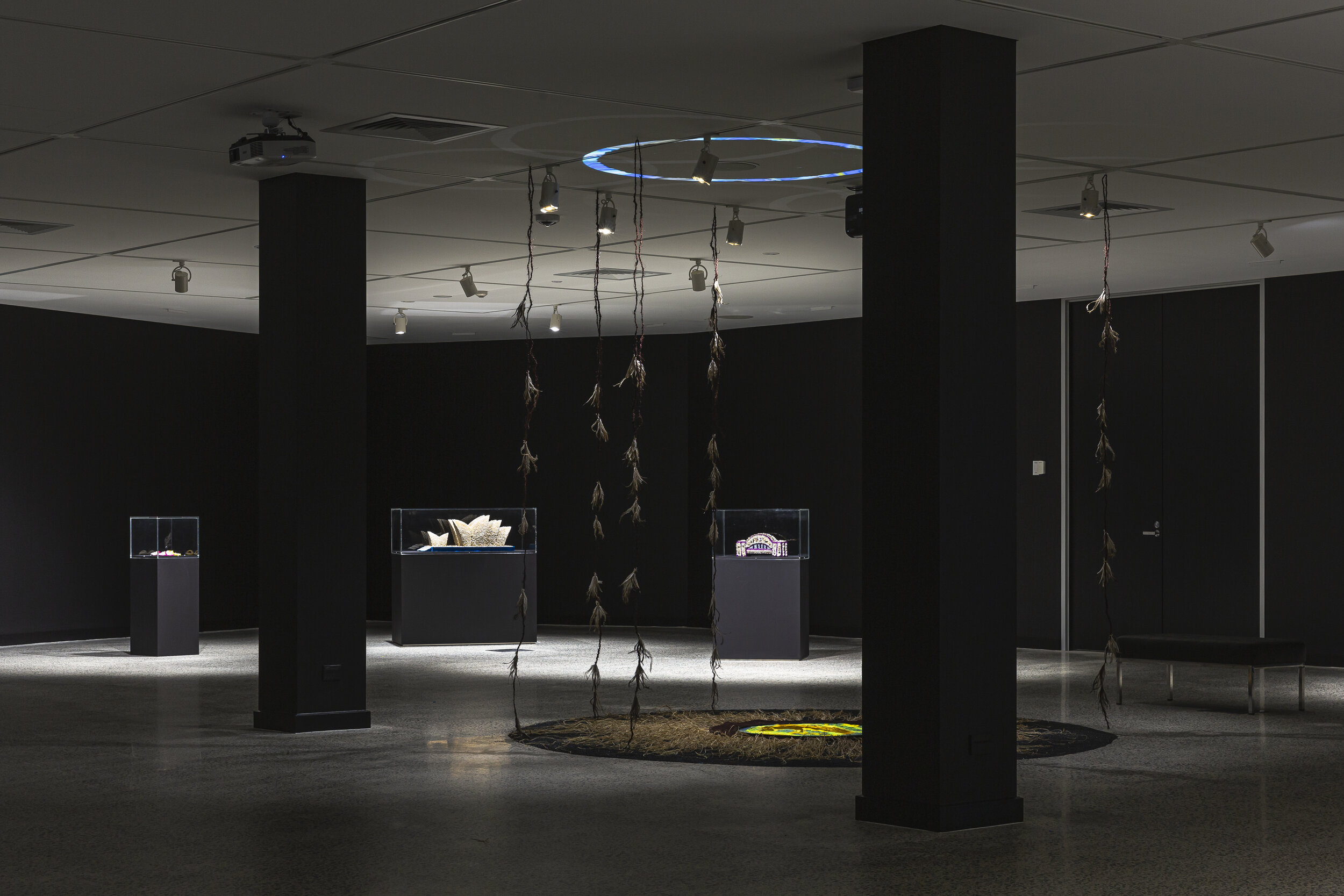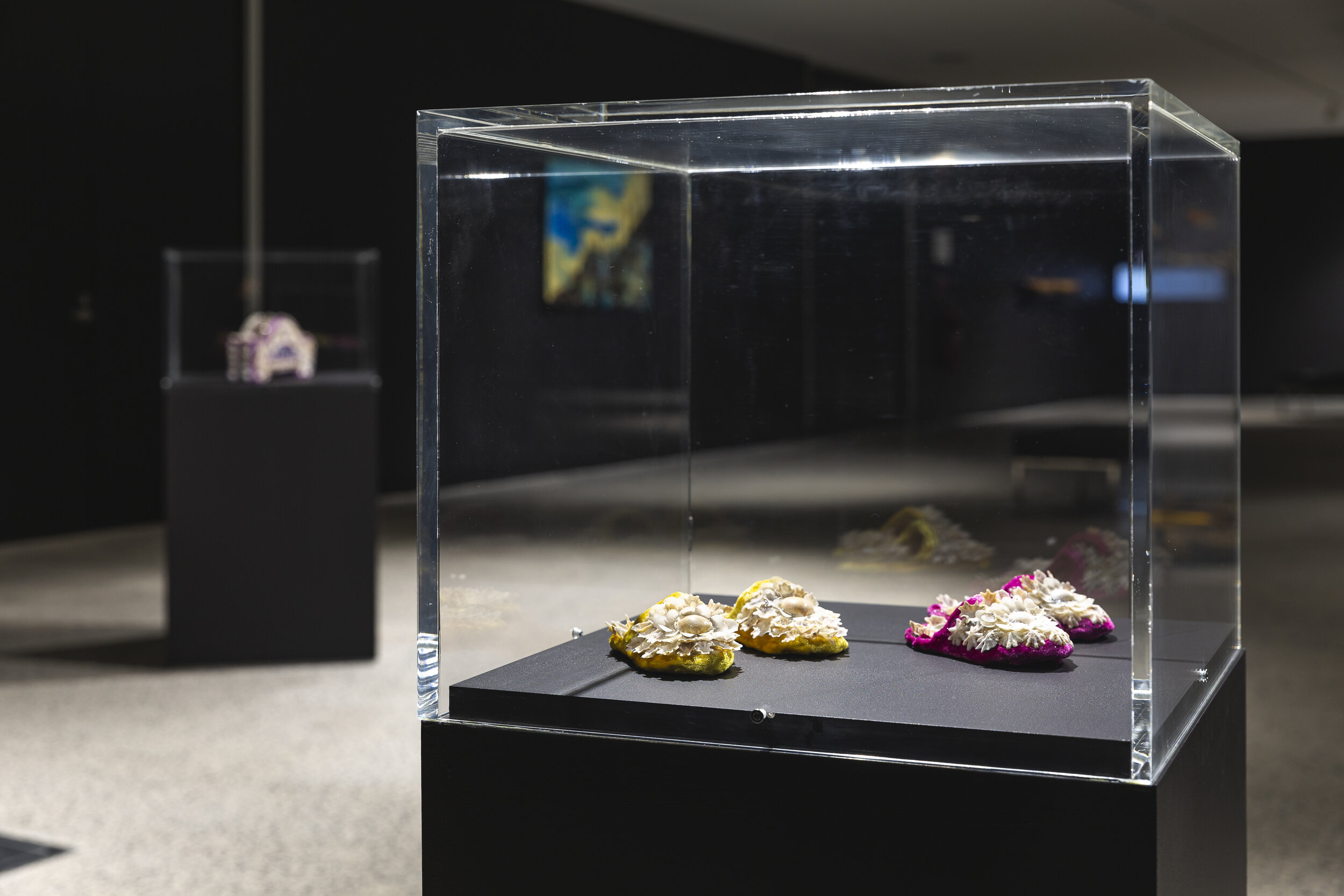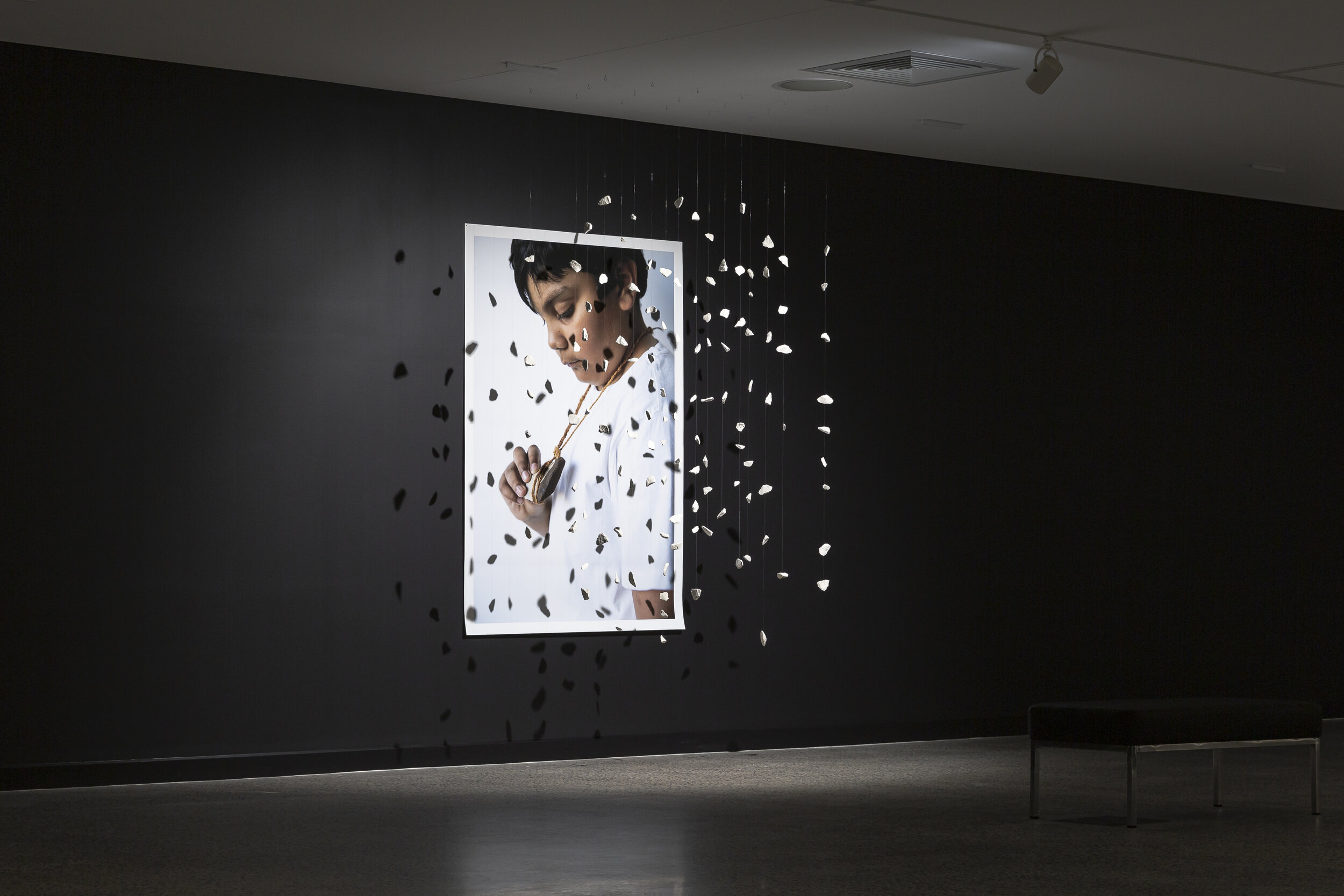Declaring presence: ‘Ngaliya Diyam’ at Granville Centre Art Gallery
/In a year of precarity and isolation, artists and organisations alike have demonstrated that cultural resilience is forged through locality and communal solidarity. Indeed, American academic Susan Healey has defined cultural resilience as the capacity of a distinct cultural system to absorb disturbance and reorganise while undergoing change so as to retain key elements of structure and identity.
In Western Sydney, Granville Centre Art Gallery’s inaugural exhibition ‘Ngaliya Diyam’ co-curated by Dennis Golding and Rebekah Raymond celebrates the cultural resilience of First Nations Australians. The title ‘we are here’ in the Darug language itself poses as a declarative defiance of the disturbances of violence and genocide brought by the settler-colonial state. The rejuvenation of language actively resists the monocultural, monolithic and monolingual institutions and policies of White Australia. It heralds the ongoing and indefatigable creativity and innovation of the works of Nadeena Dixon, Jannawi Dance Clan, Aunty Marilyn Russell, Lucy Simpson, Aunty Esme Timbery, Shay Tobin and Kirra Weingarth (on display until 24 January 2021).
Timbery’s renowned sculptures see her covering miniature models of the Sydney Harbour Bridge, the Opera House and two baby velvet slippers in shells collected from her home in La Perouse. Her intricate handiwork is part of a tradition of shellwork carried through her matrilineal heritage. Such techniques demonstrate a deep knowledge of the waterways, the tides and the shores to find the particular shells Timbery uses. Since the 1800s Indigenous women have often sold shell baskets to tourists in La Perouse and, within this historical context, it is also possible to see Timbery’s work as a reflection on an industry that continues to exploit and appropriate Indigenous culture. These souvenirs often take the form of Australian architectural icons that themselves, as architectural feats based on imitations of Euro-American design, are reminders of the erasure of Indigenous histories and cultures as part of the colonial project. By reclaiming these icons by covering them in shells, the works are a critical interrogation of this project. These darker histories are also embodied by Timbery’s baby shoes, intended as a memorial for the lost children of the Stolen Generations. Simultaneously, however, the painstaking handiwork is testament to a flourishing tradition that endures despite centuries of imposition and theft. Timbery reveals that these traditions continue not only in and with the land, but in and with waterways and airways.
Trans-generational sharing of knowledge is further evoked in Lucy Simpson’s installation Necklace for a Boy (2016), in which a large photographic print on the back wall depicts a young boy tenderly looking down at a necklace he wears. White ceramic shards modelled after stone fragments found on Yuwaalaraay country cascade from the ceiling, casting shadows onto the photograph behind and posing as a reminder of ancestral presences. By doing so, the shards and their shadows represent intangible systems and modes of knowledge that will continue from generation to generation. This embodied knowledge is further displayed in the 12-minute performance by Jannawi Dance Clan filmed and displayed on a video screen in the corner of the gallery space.
If the aim of the colonial project, in particular the concept of terra nullius, lies in total erasure and denial, then Weingarth’s globes and orbs in Connections Reignited (2020) are a reminder that the flame of cultural resilience has not been extinguished. Weingarth’s use of light may be seen as a corrective to the persistent absentmindedness of mainstream Australia.
There are motifs of continuity throughout the exhibition space in the form of concentric shapes, ties, bonds, threading and weaving. Dixon’s installation of coconut fibre and twine creates a woven portal. A projection of blue circles onto the gallery ceiling speaks again to attachment and continuation, a motif mirrored in the exhibition design by April Phillips that features chains of links to symbolise continuity but also togetherness and solidarity among First Nations curators, artists and cultural leaders, capturing a moment of profound and radical hope moving forwards.
Soo-Min Shim, Publication Manager
‘Ngaliya Diyam’ is open at Granville Centre Art Gallery until 24 January 2021.







